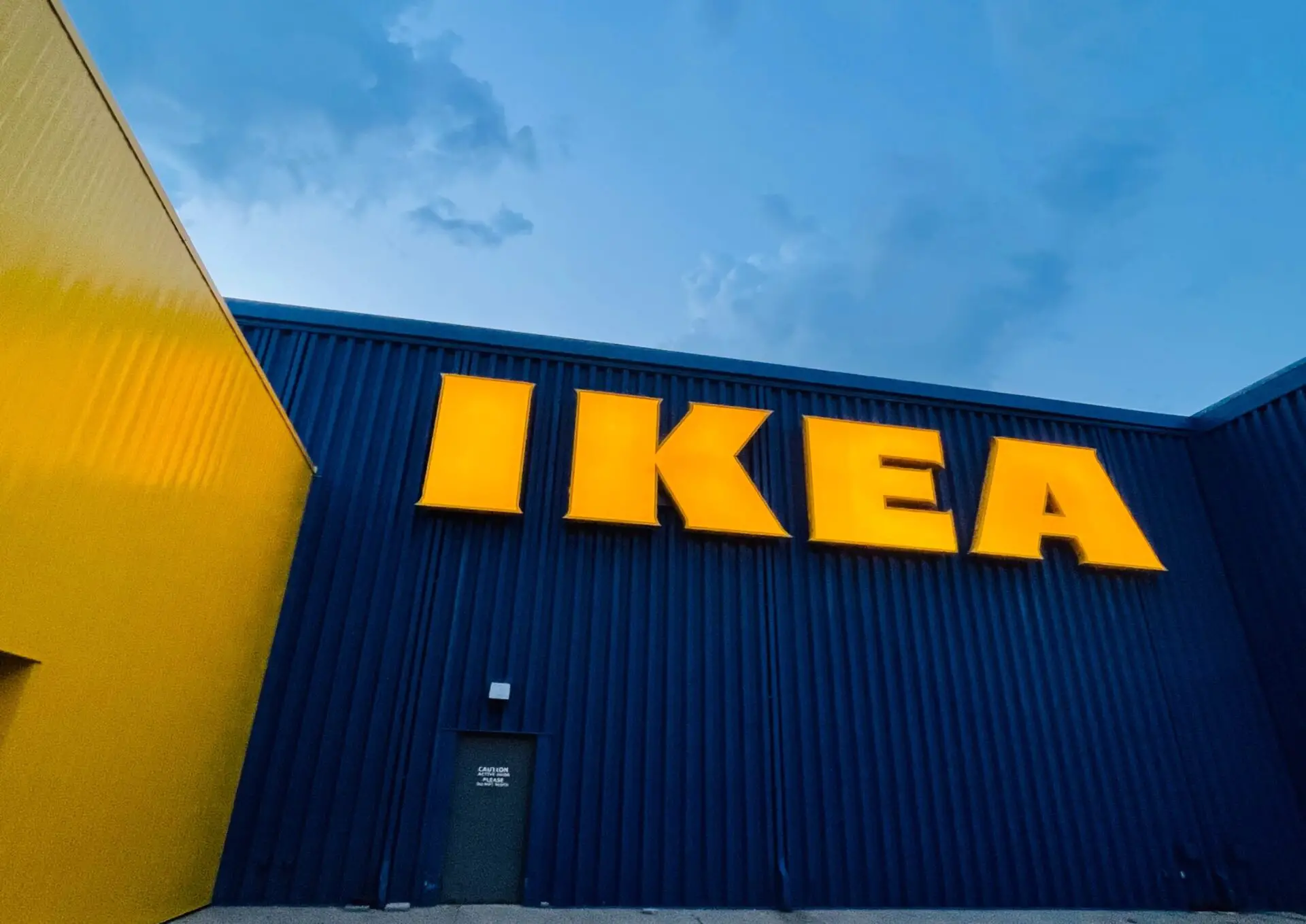Ikea is a household name across the globe, but it's not the only company in the furniture business. Ikea's competitors include a range of companies, from small mom-and-pop stores to major retailers like Walmart. So how does Ikea compare to its competition? What are Ikeas strengths and weaknesses? And why is Ikea more successful than its rivals?
We will take a look at Ikeas strategy and how it compares to the strategies of its competitors.
Who are the largest Ikea competitors?
There are a few companies that compete with Ikea on a global scale. These companies include Wayfair and Amazon. They are key competitors because these companies offer furniture and home goods at a competitive price point and they have powerful e-commerce capabilities.
Ikea can compete by offering a higher quality products and a wider range of unique styles. Ikea's other competitors include department stores such as Macy's and Sears, as well as discount chains like Target and Walmart.
Who is the biggest competitor of IKEA?
The biggest competitor of Ikea is Walmart. Ikea has a larger market share than Walmart, but Walmart offers a much larger selection of products. Ikea can compete by offering a better customer experience and higher quality products.
Wayfair and Amazon are also big competitors to Ikea as they both have a strong network of logistics for fast deliveries. They are also well-known and preferred by customers that would rather shop online than visit retail locations.
What companies are similar to IKEA?
Companies that are similar to Ikea include Wayfair and Amazon. These companies all offer furniture and home goods at affordable pricing. In terms of brick-and-mortar retail, the most similar would be something like Bed, Bath Beyond for their furniture-specific selection.
Target can be similar in the sense that they are also including a restaurant for customers to dine at. Ikea can compete by offering higher quality products, a wider range of styles, and a better shopping experience. These competitors may have similar aspects to Ikea, but Ikea is its own unique brand.
What is Ikea's strategy?
Ikea's strategy is to focus on providing a high-quality product at an affordable price. They target their marketing toward families and young adults who are looking for stylish but affordable furniture.
However, their strong brand image and low prices continue to attract customers from all over the world. They have a unique shopping experience and their strategy is to reinforce this as its competitors can not replicate this through e-commerce. Keep reading as we go into more depth into Ikeas strategy and if they need to adjust it for the years to come.
How is IKEA different from its competitors?
Ikea is different from its competitors in several ways. First, Ikea offers more unique products that cannot be found at other stores. Second, Ikea offers high-quality- products at a lower price point than its competitors. Ikea can also compete by offering a better customer experience.
Its trademark Swedish style and fun family restaurant is another aspect that helps the brand differentiate itself from competitors. Ikea plans to stay ahead of its competitors by continuing to offer high-quality products at a low price point. They will need to ensure their brand strength through new creative experiences that are difficult to replicate.
Unique nordic designs
Ikea does not shy away from its Swedish roots. With its clear yellow and blue logo, it looks to bring a unique culture to shoppers' homes. This helps create an exotic, yet minimalistic atmosphere for kea stores. Ikea also offers a wide range of products, from furniture to home goods, that are not typically found at other retailers.

The Ikea restaurant
The Ikea restaurant can be a reason to shop there. With their signature Swedish meatballs, their dining experience has been known as family-friendly. Ikea has a meal for everyone. And, Ikea is not just limited to Swedish food – it offers a variety of options such as pizza, pasta, and desserts. This can help draw in shoppers who may have different tastes.
The Ikea experience
Ikea's unique designs and products are only part of what makes it stand out from its competitors. In addition to their restaurants, they offer play areas for children. Ikea also offers a wide range of services, such as home delivery and assembly, that can make shopping there more convenient for customers.
Guided adventure
Gamify the shopping experience and the pain of purchasing decreases. If your child does not want to go on the adventure through the store, you can drop them off at the play area while you shop. Although, they are sure to have fun going along the shopping journey with you as Ikea leaves bins of toys and stuffed animals throughout the store.

Finding hidden treasure
These toys and stuffed animals are like finding hidden treasure. Ikea also provides upsell items to go along with the room for adults as well. Ikea has a wide range of products for all members of the family. It understands that not everyone wants to shop for furniture, so it offers upsells throughout the way.
This can look like a stuffed animal for the toddler to pick up, a notebook that would be useful for a teenager to have, a set of gorgeous pillows that the wife just has to have, and a massage tool for the husband's back. While you are at it, you might as well pick up that useful-looking kitchen tool for Granny's new cooking hobby.
You may have been only planning to buy one piece of furniture but will likely add these upsells to the cart along the way. Ikea knows this and they have strategically placed these items at the best locations.
Tired yet?
One of the downsides of Ikea is that it is a long experience to go through the entire store. They do offer 'short-cuts' but if you've ever been there with a family, it usually turns into a game of 'hide and seek'.
For example, kids will naturally cut through to the kid's section where there are plenty of games. At the same time, the teenage son is testing chairs for his gaming set-up. The adults may be tired of chasing after them and decide to take a break by sitting on a coach. As they are sitting, they realize how comfortable it is.
They look down and see the low price tag and to their luck, it's on sale! The couples convince themselves that their old coach was worn-out and they need a new one. Luckily they do not have to carry the coach throughout the rest of the store as Ikea has brilliantly implemented a system where all you have to do is write down the 'code' that matches that furniture type and find it in the warehouse right before the checkout.
Ownership through co-creation
A powerful marketing strategy is co-creation with the customers. This helps create a sense of ownership as customers have to find their items in the warehouse and assemble them when they get home.
This is clever because it can save the company on staffing costs while creating a collaboration feel with the customers. Humans value things they create more. This is true even if they are not the creative designers of items. A simple assembly will do the trick. This sense of ownership creates a higher sense of perceived value and prevents the brand from being known as a cheap furniture store.

Why is IKEA more successful than its competitors?
The company is also known for its innovative marketing campaigns that reinforce self-assembly and family fun. These often go viral and generate a lot of buzz around the brand. Ikea is always thinking of new ways to reach its target market and stay ahead of the competition. Ikea's strategy seems to be working well for them so far.
They have a clear target market and they are always reinforcing their brand message to stay ahead of the competition. However, as with any company, Ikea is not immune to competition. Several other stores offer similar products and services, so Ikea needs to continuously work hard to stay on top. For example, Home Depot is a major competitor for IKEA in the United States.
Home Depot offers a wide variety of home improvement and furnishings products, and they have a significant presence in the DIY (do-it-yourself) community. Ikea will need to continue to differentiate itself from competitors like Home Depot to maintain its market share. As of right now, the Ikea store is much more fun for a family to shop in.
But for those that are shopping alone and have a specific home furnishing project, Home Depot may be a better choice. Other retail brands such as Walmart and Target aren't very fun to shop in. Kids often will be bored and would urge the parents to leave.
Ikea is more successful than the competition because they allow families to have a fun family day while shopping. Ikea's strategy seems like it could be sustainable in the long run if they continue to differentiate themselves from their competitors.
Are Walmart and IKEA competitors?
The answer to this question is not as straightforward as it may seem. Ikea does have some direct competitors, such as Walmart and Home Depot, but these stores sell a wider range of products than Ikea does.
Walmart and Ikea are competitors because they both offer furniture for low prices, but the branding and marketing are much different. Walmart is known as a general store that also carries furniture while IKEA is a brand dedicated to home furnishing.
Other notable competitors
Ikea's other competition comes from furniture retailers, such as Ashley Furniture and Rooms to Go. These companies offer similar furniture at lower prices. They are also focused on home furnishing rather than being a general store. It will be interesting to see how Ikea's strategy evolves in the coming years and whether or not it can remain competitive against its rivals.
Online competition
If Ikea does decide to push its online efforts more, it will have to compete against companies like Amazon and Wayfair. This can be a difficult battle for Ikea because online retailers have a few advantages.
They can reach a larger audience with their marketing efforts and they don't have the same overhead costs as Ikea does. Additionally, online retailers can offer lower prices because they don't have to worry about the cost of shipping furniture to customers. Ikea will need to find ways to differentiate itself in the online space if it wants to be successful.
One way that Ikea could do this is by gamifying their online shopping experience to make it a fun website to visit. Letting families have fun while shopping for furniture is something they are already known for. If they added an online social media challenge, it can help transform them from just a fun retail experience to an online trend.
Only time will tell how Ikea's competitors will react to the company's expansion plans. If Ikea can successfully execute its strategy, it could regain its position as the top furniture retailer in the world.
How does IKEA deal with competition?
IKEA is known for its low prices, which puts it in competition with other big-box stores like Walmart and Target. IKEA also competes with furniture retailers like Restoration Hardware and Crate & Barrel. To stay ahead of the competition, IKEA has been expanding its product line to include more high-end items.
The company has also been investing in eCommerce so that consumers can buy IKEA products online. Its website is easy to use and offers upsells, similar to Wayfair and Amazon. Ikea's biggest competitor may be itself; the company has been struggling to keep up with demand and has had to ration some of its products. Ikea's competitors are diverse, but the company is still finding ways to stay ahead.
Who is Ikeas target market?
Ikea has a very specific target market: low to middle-income families who are looking for stylish but affordable furniture. This gives them a competitive advantage over other stores because they can offer cheaper prices without compromising on quality or design.
What are Ikea's strengths?
Ikea's strengths include its unique products, high-quality products, and low price point. Ikea can also compete by offering a better customer experience. They also have a strong brand name and a long reputation as the go-to family shopping experience.
What are Ikea’s weaknesses?
Ikea's weaknesses include its lack of customer service and requirement of self-assembly. This is, however, also one of their marketing plans and has proven to work. Instead of calling a customer service representative, customers will turn to ask their family members for help.
This further reinforces the brand's message of family support. Some people enjoy the adventure of finding what they need on their own and putting together the furniture. Other customers find this as a weakness of the brand if they prefer to be able to buy something quickly and move on with their day.
As mentioned early, Ikea has begun to combat this weakness with an eCommerce capability. Ikea's ability to turn their weaknesses into strengths may be a factor in why they have been so successful over the decades.
How does Ikea plan to stay ahead of its competitors?
Ikea plans to stay ahead of the competition by reinforcing its brand image. The easily recognizable logo and long history give them an advantage. Ikea is also a very efficient company, which keeps costs low. This allows them to sell their products at a lower price than most of their competitors.
It is a fun retail shopping experience, trademark restaurant, and rare Swedish style are all unique factors that help them stay ahead of the competition. In addition, Ikea has a very efficient distribution system, which gets their products to customers quickly and efficiently.
Finally, Ikea has a strong customer loyalty program that encourages customers to keep coming back. All of these factors combine to give Ikea a strong competitive advantage. However, Ikea cannot rest on its laurels.
The company must continue to innovate and evolve to stay ahead of the competition. Ikea's competitors are also very large and well-funded companies. They will be looking for any opportunity to take market share away from Ikea.
Ikea is known for its low prices, but the company is facing increasing competition from other retailers who are also looking to undercut Ikea's prices. One such competitor is Amazon, which has been making a push into the furniture market with its line of furniture called 'Rivet'. They have also released furniture under another brand name called 'Stone & Beam'. Amazon's furniture is often cheaper than Ikea's, and it offers free shipping for Prime members.
Ikea vs Wayfair
Another competitor to Ikea is Wayfair, which has been aggressively expanding its reach in the past few years. Wayfair now offers more than 14 million products, and it has a large selection of furniture. Wayfair has grown quickly through word-of-mouth while Ikea remains a well-known legacy brand.
Ikea needs to get people talking about them again if they want to stay ahead of Wayfair. Both Amazon and Wayfair are two companies that pose a serious threat to Ikea's market share. It will need to continue to offer low prices and good quality products if it wants to stay ahead of these competitors.
Ikea market share
Ikea competitors are starting to catch up. To remain competitive, Ikea needs to focus on its core competencies and continue to innovate upon them. Ikea's main competitors are Wayfair, Amazon, and Walmart. All of these companies have been able to grow their market share at Ikea's expense.
Ikea needs to focus on improving its online presence and delivery times to remain competitive. Ikea has been able to grow its market share by offering a unique shopping experience.
However, as Ikea competitors are starting to replicate this experience, Ikea will need to find new ways to differentiate itself. One way that Ikea could do this is by focusing on sustainability and offering more eco-friendly products.
Ikea is a private company but these market caps from its competitors can help share some insights:
- Wayfair (14.80B) - (Ticker Symbol: W)
- Amazon (1.56T) - (Ticker Symbol: AMZN)
- Walmart (374.92B) - (Ticker Symbol: AMZN)
The Ikea vision
“To create a better everyday life for the many people.”
They state that their vision goes beyond just home furnishing. They want to make a difference in the world positively and are a social business, dedicated to using the power of design and innovation to inspire positive change in every community where they operate. From sourcing the best raw materials in the world to how their products help customers live a more sustainable lifestyle at home. They are committed to using the strength of design and innovation for good.
Ikea strategy
With this powerful vision statement, a strategy that aligns with these values will further gain support. This is because millennials and younger generations are becoming more willing to shop from sustainable brands. Many of the kids that grew up playing in the Ikea stores are now buying their own homes.
An alignment with this generation's beliefs and values will help ensure their brand's success in the digital e-commerce age. If this strategy is done well, many customers that prefer convenience may skip Amazon and Wayfair. They may decide to go down a trip through memory lane as they give their kids the same experience they once had.
Conclusion
Ikea's strategy focuses on providing a unique shopping experience, offering sustainable products, and appealing to millennial values. Ikea will need to continue to execute this strategy well if it wants to remain competitive in the furniture market.
Image source: Unsplash

